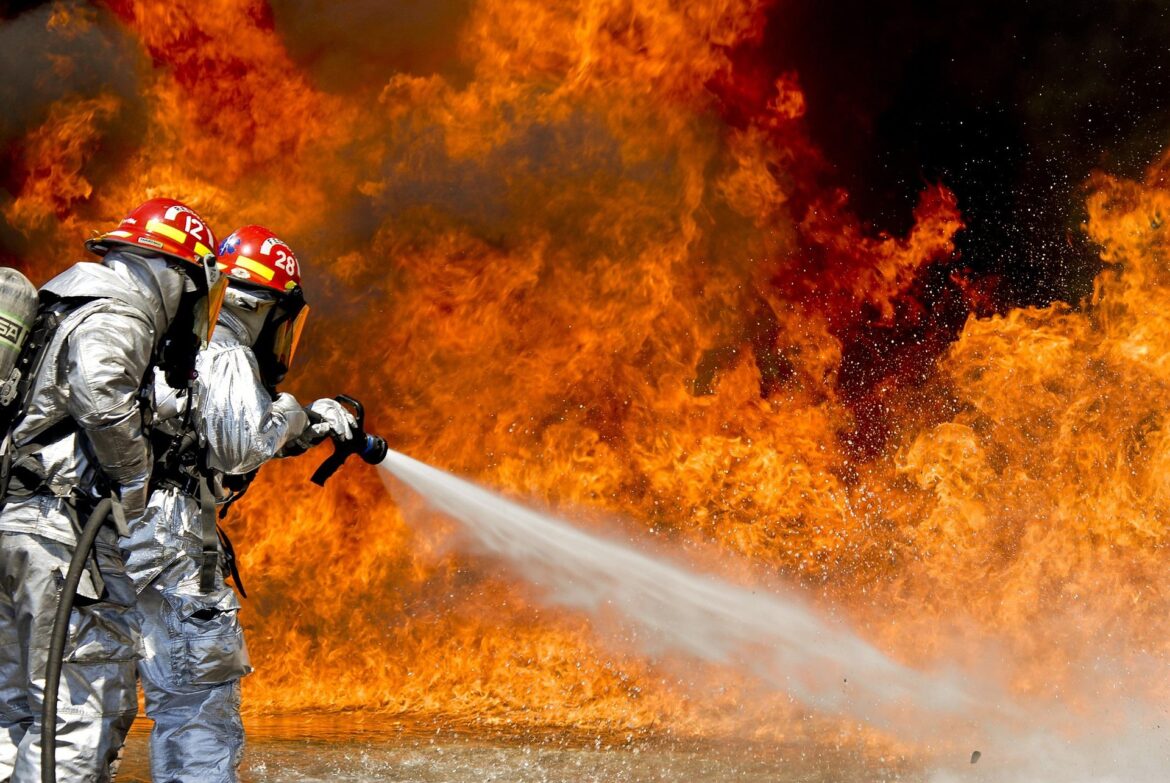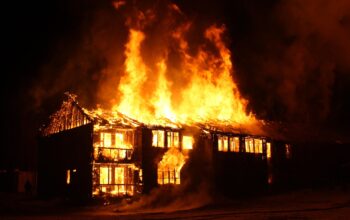A powerful explosion ripped through a fireworks factory blast in Sattur, Virudhunagar district, Tamil Nadu, on 8 July 2025. At least 10 people were killed—six workers died on the spot and four passed away later in hospital—and more than five others suffered injuries. The blast leveled eight adjacent rooms, causing widespread devastation. Authorities have begun investigations into safety compliance, and local officials have announced financial compensation for the victims’ families.
What Happened at the Factory?
On 8 July 2025, a loud explosion occurred in the mixing room of the fireworks factory located near Sattur, in the Virudhunagar area—India’s “fireworks capital” as it’s responsible for a significant portion of national production Wikipedia+4The Star+4The Times of India+4. The primary blast was followed by secondary detonations, causing adjacent rooms to collapse. Emergency teams were dispatched immediately, and the fire was brought under control several hours later .
Initial reports indicate:
- 6 workers died instantly in the blast zone
- 4 more succumbed to injuries in hospital
- 5+ workers suffered injuries ranging from moderate to critical
- Emergency services from Sattur and Sivakasi fire departments responded promptly Wikipedia+2The Star+2Wikipedia+2
A panic-stricken crowd gathered as smoke billowed into the sky. Rescue workers used JCB machinery and manual efforts to clear debris and access survivors. Authorities said the factory owner fled, and one individual named Loganathan has been detained in connection with the incident Republic World.
Why It Matters
1. A Pattern of Repeated Tragedies
This incident echoes past fireworks factory disasters in Tamil Nadu. In February and June 2024, separate blasts in Sattur and surrounding areas killed a total of 14 people Wikipedia+9Wikipedia+9The Star+9. Similar accidents have occurred over the past decade, including:
- 2012 Sivakasi fire (40 deaths) Wikipedia+2Wikipedia+2Wikipedia+2
- 2023 Duttapukur factory blast in West Bengal (9 deaths) Wikipedia+1The Star+1
These recurring events highlight systemic issues: poor safety standards, unregulated chemical storage, and high-pressure production cycles.
2. The Human Cost
Families have lost providers. Injured survivors—many from economically vulnerable backgrounds—face uncertain recovery and medical bills. The scale of devastation leaves long-term scars on local communities.
3. Regulatory and Safety Questions
Tamil Nadu authorities previously took measures after past incidents, yet factories continue to flout regulations. This incident reopens the debate on whether existing guidelines are enforced and if punishments are sufficient deterrents.
The Rise of Fireworks Production in Virudhunagar
The region around Sivakasi, including Sattur, is the largest fireworks production hub in India, contributing approximately 70–90% of the country’s fireworks Wikipedia+8Wikipedia+8The Times of India+8The Times of IndiaWikipedia+5Wikipedia+5Wikipedia+5. Over 1,000 factories are spread across 520 industrial units Wikipedia+1Wikipedia+1. The industry’s annual turnover is estimated in the hundreds of millions of dollars, employing hundreds of thousands of workers.
This economic dependence unfortunately makes it difficult to enforce safety reforms, especially given the pressure to meet seasonal demand for festivals like Diwali. Factories often operate under unregulated conditions, with raw materials stored in sheds, children working, and chemicals dried in unsafe environments .
Investigations and Legal Response
Following the blast:
- Police registered an FIR and detained Loganathan, while the main factory owner remains at large Deccan Herald+7Republic World+7The Times of India+7.
- The Tamil Nadu state government announced compensation of ₹400,000 per victim for families of those killed The Star+1Wikipedia+1.
- Authorities plan to inspect other similar facilities in the area and reassess licences.
Local leaders also face growing calls from unions and residents for stricter enforcement and complete factory closures in high-risk zones.
What Caused the Explosion?
While a definitive cause has not yet been released, common contributing factors include:
- Unlicensed or non-compliant operations, frequently manufacturing fancy fireworks without required approvals Republic World+1www.ndtv.com+1Wikipedia+2Wikipedia+2The Times of India+2.
- Unsafe handling of decomposing chemical pellets, particularly colourants being sun-dried Wikipedia+5www.ndtv.com+5The Times of India+5.
- Electrical faults or sparks in mixing rooms initiating chain reactions.
- Accidental ignition from friction or unknown heat sources.
Investigators in this case will examine structural compliance, storage norms, licence documentation, and worker safety training protocols.
Safety Checklist for High‑Risk Factory Zones
While focusing on Tamil Nadu, here are universally relevant safety measures for industrial zones:
- Proper licensing and periodic renewal
- Zoning rules: Ensure factories are a safe distance apart
- Structural integrity: Explosion-resistant walls and fireproof doors
- Hazardous material storage: Secure, ventilated, and locked
- Training and drills: All workers must receive regular awareness training
- Limit child labour: Comply with national laws banning minors
- Incident reporting culture: Encourage employees to highlight unsafe conditions
Real Voices from the Site
- Resident worker: “The mixing room simply went up; we didn’t have time to run… the whole shed came down.”
- Local union leader: “This is the third time such a blast has happened in two years. We need real punishment and factory shutdowns.”
These voices represent a broader safety concern affecting low-wage labourers, often with little choice but to accept risk to support families.
Lessons for UK and Global Audiences
Although the details are specific to India’s fireworks industry, this event underlines broader industrial safety truths:
- Regulated enforcement must be consistent, not reactive
- Even legal operations can be unsafe if supervision is weak
- Worker training matters—most deaths arise from hidden hazards
- Child labour and informal economies heighten danger
- Public accountability and media scrutiny drive change—without them, incidents are easily overlooked
Frequently Asked Questions (FAQs)
Q1: How many people died?
At least 10 individuals either died at the scene or in hospital as a result of the explosion Republic World+5The Star+5The Times of India+5.
Q2: What type of factory was it?
It was a fireworks/mixing room factory—part of Tamil Nadu’s large fireworks production belt .
Q3: What will happen to the factory owner?
One person, Loganathan, has been arrested. The actual owner is still at large. Criminal and regulatory investigations are ongoing Republic World.
Q4: Are these factories regulated?
Yes, but often regulations are poorly enforced. Expansion of unlicensed production is widespread .
Q5: What compensation is being provided?
Tamil Nadu’s state government has announced ₹400,000 for each family of the deceased workers www.ndtv.com+2The Star+2Wikipedia+2.
Q6: How does this compare to past incidents?
Sadly similar—previous deaths in 2024 (14 killed) and 2012 (40 killed) occurred under analogous conditions .
Q7: What safety lessons can be learned?
Improved regulation, safer zoning, worker training, and regular audits could save lives—this applies to industries worldwide.
Final Thoughts
The Sattur fireworks factory blast is more than an isolated tragedy—it epitomises systemic industrial risks in high-pressure zones. Vulnerable workers pay the highest price for unchecked production and public indifference. Urgent reforms are essential, from regular inspections and worker empowerment to rigorous licence enforcement.
As countries worldwide pursue economic growth, they must balance profit with responsibility. Human lives are not expendable collateral. This disaster should serve as a catalyst to demand safer factories—starting in Tamil Nadu and echoing into marketplaces everywhere.
Internal Links from The Breadline Bulletin
- Beginner’s Guide to Investing in the UK (2025): How to Start with Just £50
- Trump’s 30% Tariffs Shake Global Markets, Hit UK Stocks
- UK Heatwave Triggers Record Wildfires and Emergency Water Bans in 2025
Resources & References
- Fireworks factory blast kills 10 in Tamil Nadu – The Star The Star+1Republic World+1
- Tamil Nadu: 7 killed in explosion at firecracker factory – Times of India Republic World+9Wikipedia+9The Times of India+9
- Massive Explosion at Fireworks Factory in Virudhunagar – Republic World The Times of India+5Republic World+5Wikipedia+5
- Six killed in explosion in fireworks factory in Tamil Nadu’s Sivakasi – Deccan Herald Deccan Herald+1Wikipedia+1
- 2024 Virudhunagar explosions – Wikipedia Wikipedia+4Wikipedia+4The Times of India+4
- Sivakasi factory explosion (2012) – Wikipedia Wikipedia+6Wikipedia+6Wikipedia+6
- Duttapukur blast 2023 – Wikipedia Wikipedia
- Sivakasi economy and industrial overview – Wikipedia Wikipedia
Disclaimer
This article is based on news and official statements available as of 14 July 2025. Some details may change as investigations progress. For legal or safety concerns, consult local authorities.
SEO Meta Info
SEO Title: Tamil Nadu Fireworks Factory Blast Kills 10 Workers – July 2025
Slug: tamil-nadu-fireworks-factory-blast-july-2025
Meta Description: A fatal explosion at a fireworks factory in Sattur claimed 10 lives and injured more. Recurring tragedies in Tamil Nadu reveal urgent safety failures—what must change.



